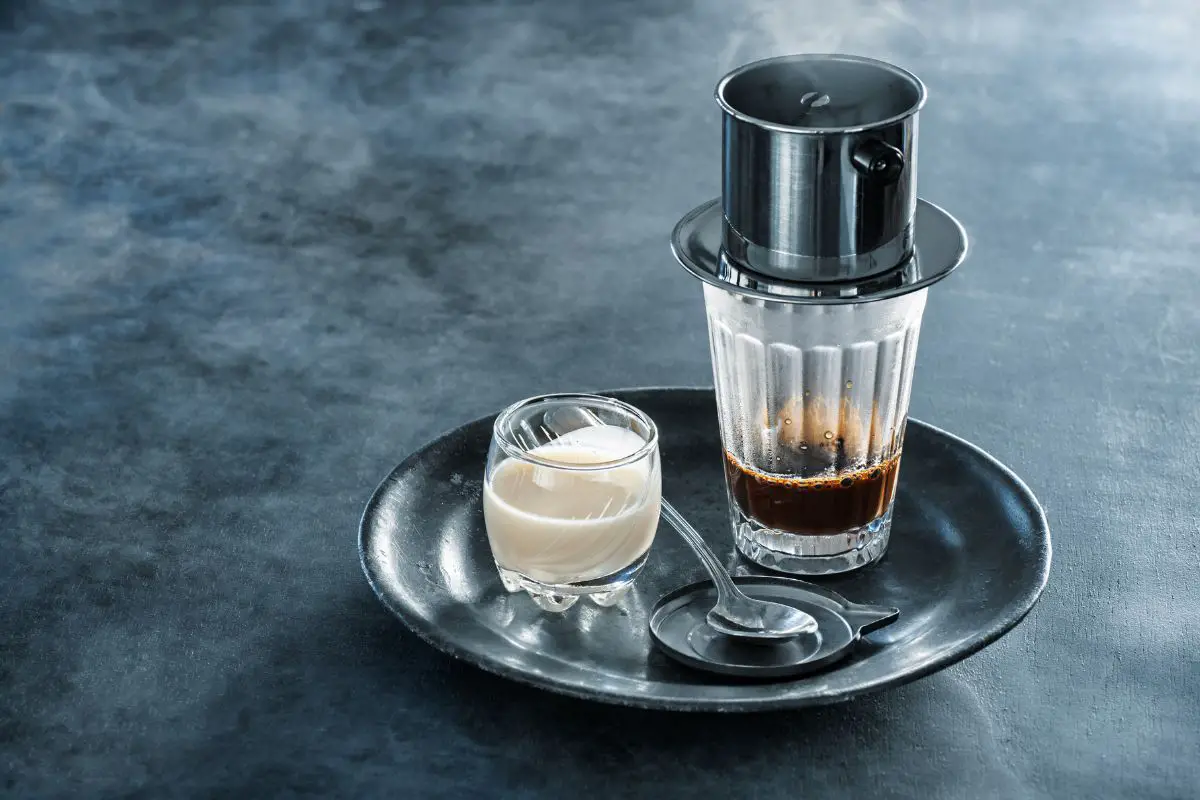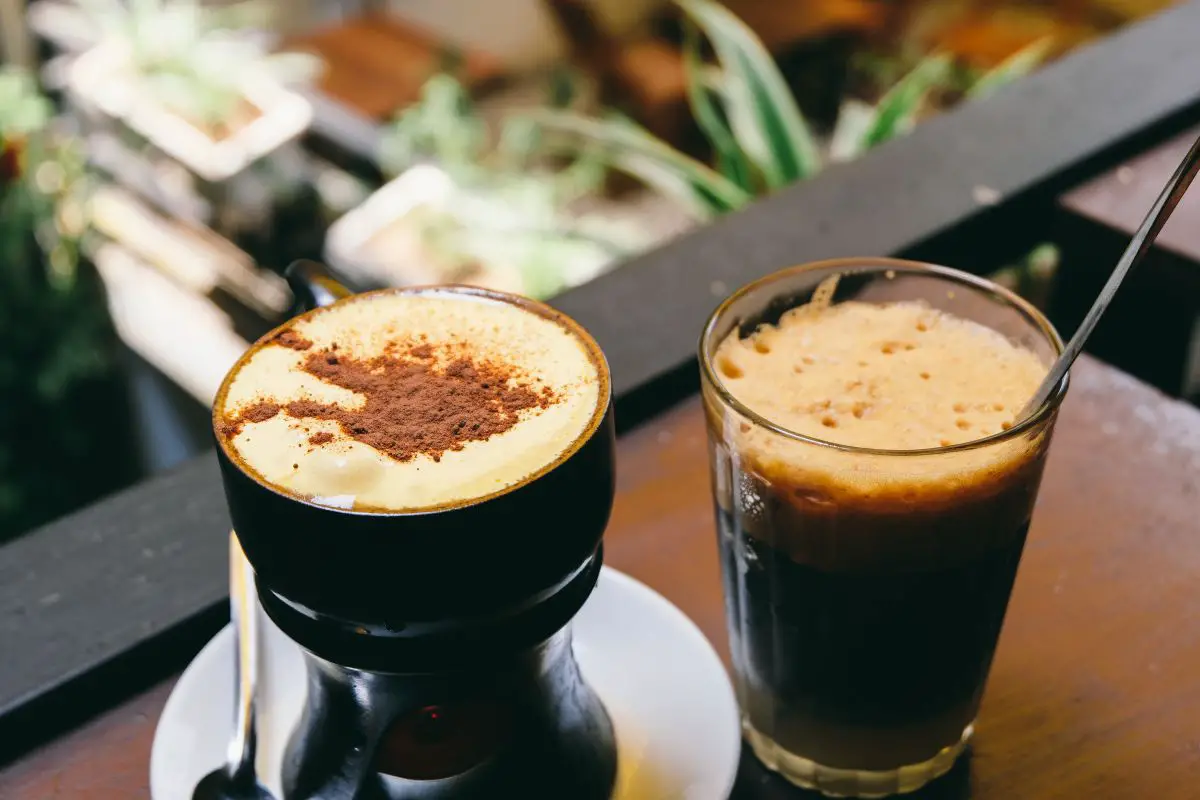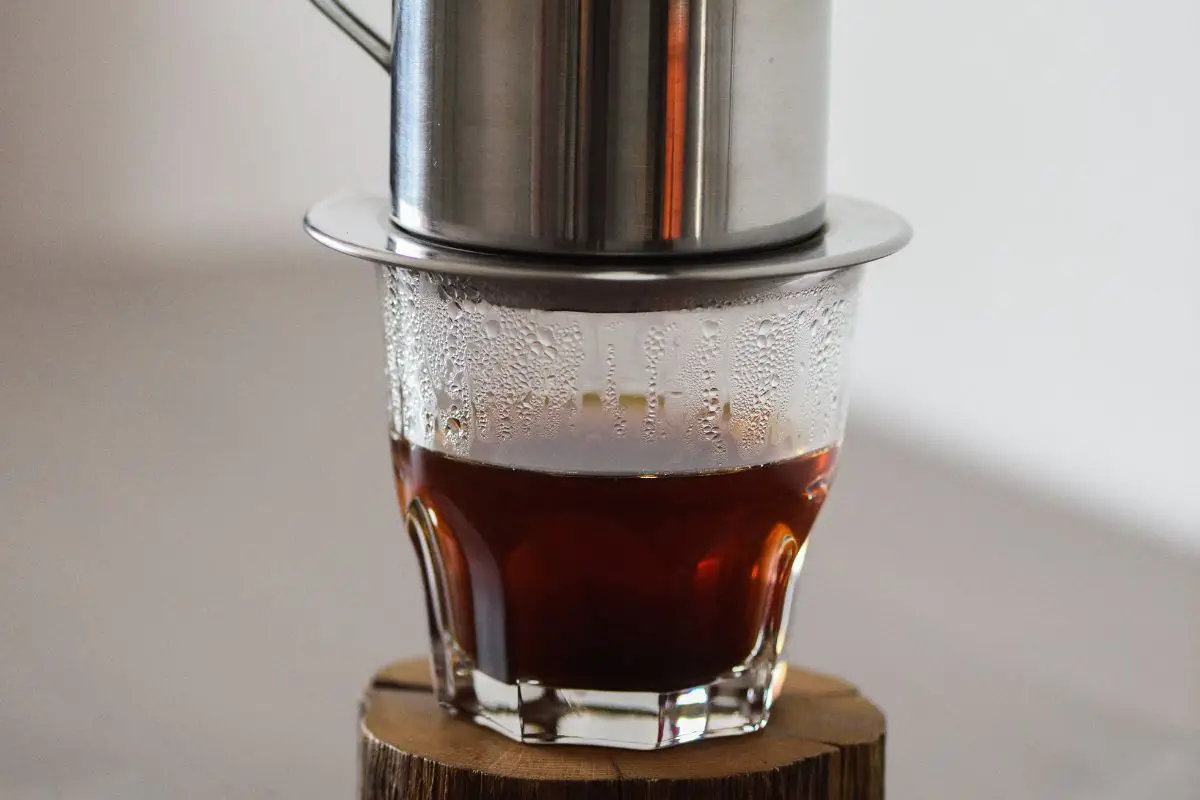In the realm of coffee enthusiasts, few beverages hold the same allure as Vietnamese coffee. Its rich, bold flavor and unique brewing method have captivated the taste buds of caffeine aficionados worldwide.
However, beyond its exquisite taste, the caffeine content in Vietnamese coffee has become a subject of interest and concern. Understanding the caffeine levels in this beloved beverage is essential for those who seek to consume it responsibly.

Vietnamese coffee, known for its robust and distinctive flavor, is traditionally made using a small metal filter called a phin. This brewing method allows for a longer contact time between the coffee grounds and hot water, resulting in a potent and concentrated brew. Consequently, the caffeine content in Vietnamese coffee tends to be higher compared to other brewing methods.
In this article, we will explore the origins of Vietnamese coffee and delve into the caffeine content it possesses. Additionally, we will explore the effects of caffeine on the body and discuss Vietnamese coffee culture. By understanding the nuances of caffeine in Vietnamese coffee, readers will be equipped with the knowledge to enjoy their cup of joe safely and responsibly.
Key Takeaways
- Vietnamese coffee is known for its rich flavor and unique brewing method using a phin filter.
- It originated from French colonization in the 19th century in Vietnam’s central highlands region.
- Vietnamese coffee is often served with condensed milk for a sweet and creamy taste.
- The caffeine content in Vietnamese coffee varies based on the coffee bean type and brewing technique, but it can range from 95-200 milligrams per cup.
The Origins of Vietnamese Coffee
The origins of Vietnamese coffee can be traced back to the French colonization of Vietnam in the 19th century. During this time, the French introduced coffee cultivation to Vietnam, primarily in the central highlands region. The favorable climate and fertile soil of this region made it an ideal location for coffee production. The French settlers brought with them the techniques and knowledge necessary to cultivate coffee, and soon, Vietnamese coffee became renowned for its unique flavors and quality.
Vietnamese coffee is typically made using a traditional method known as the ‘phin filter,’ which consists of a small metal brewing chamber that fits on top of a cup. This method allows for a slow extraction process, resulting in a strong and flavorful brew. The coffee is often served with condensed milk, giving it a distinctively sweet and creamy taste.
The popularity of Vietnamese coffee has grown over the years, both domestically and internationally. Today, Vietnam is one of the largest coffee producers in the world, exporting a significant amount of coffee beans each year. Vietnamese coffee has become synonymous with rich flavors and bold aromas.
Transitioning to the next section about the caffeine content in Vietnamese coffee, it is important to note that this beloved beverage offers not only a delightful taste but also a stimulating kick.
The Caffeine Content in Vietnamese Coffee
Remarkable richness resides in the robust brew of this beloved beverage from Southeast Asia. Vietnamese coffee, known for its distinct flavor and preparation method, also packs a punch when it comes to caffeine content. A cup of traditional Vietnamese coffee typically contains around 95-200 milligrams of caffeine, depending on factors such as the type of coffee bean used and the brewing technique employed. To put this into perspective, a standard cup of coffee generally contains about 95 milligrams of caffeine.
The caffeine content in Vietnamese coffee can vary based on the type and roast of the coffee bean. Robusta beans, which are commonly used in Vietnamese coffee, tend to have a higher caffeine content compared to Arabica beans. Additionally, the brewing method of Vietnamese coffee, which involves using a metal drip filter called a phin, may contribute to a stronger brew and consequently a higher caffeine concentration.
It is important to note that while caffeine can provide a boost of energy and alertness, excessive consumption can lead to adverse effects on the body, including increased heart rate, restlessness, and insomnia. Therefore, individuals who desire safety should be mindful of their caffeine intake and consider moderation when indulging in the flavorful and invigorating Vietnamese coffee experience.
Transitioning into the subsequent section about the effects of caffeine on the body, it is crucial to understand the potential impact of this stimulant on our overall well-being.
The Effects of Caffeine on the Body

With its pervasive presence in various beverages and its potential to alter physiological processes, the effects of caffeine on the body have been extensively studied.
Caffeine, a central nervous system stimulant, affects the body in several ways. It stimulates the release of adrenaline, increasing heart rate and blood pressure. This can lead to feelings of alertness and increased energy levels. Caffeine also blocks adenosine receptors in the brain, which reduces drowsiness and promotes wakefulness.
While caffeine can have positive effects on cognitive function and physical performance, it is important to consider its potential negative effects as well. Excessive consumption of caffeine can lead to symptoms such as restlessness, anxiety, insomnia, and increased heart rate. It can also cause dehydration due to its diuretic effect. Furthermore, some individuals may be more sensitive to the effects of caffeine, experiencing jitters or digestive issues even with small amounts.
In order to ensure safety, it is recommended to moderate caffeine intake and be aware of individual tolerance levels. It is generally advised to limit caffeine consumption to 400 mg per day, which is approximately the amount found in four cups of brewed coffee. It is also important to be mindful of potential interactions with medications or pre-existing medical conditions.
Transitioning to the subsequent section about Vietnamese coffee culture, it is interesting to explore how the effects of caffeine play a role in this unique and rich tradition.
Vietnamese Coffee Culture
Vietnamese coffee culture is like a vibrant tapestry woven with unique brewing methods, rich flavors, and a deep appreciation for the ritual of coffee consumption. This cultural phenomenon is deeply rooted in the country’s history and has become an integral part of Vietnamese daily life. To understand the significance of Vietnamese coffee culture, it is important to explore its distinct characteristics and the values it represents.
One way to appreciate Vietnamese coffee culture is through its brewing methods. The most popular method involves using a traditional metal drip filter called a “phin.” This slow-drip process allows the water to mingle with the coarsely ground coffee, resulting in a strong and flavorful brew. The use of condensed milk adds a touch of sweetness and creates a unique taste profile.
Another aspect of Vietnamese coffee culture is the emphasis on the ritual of coffee consumption. Coffee shops, both traditional and modern, serve as social hubs where friends and family gather to enjoy a cup of coffee. This communal experience fosters a sense of belonging and community.
To better understand the nuances of Vietnamese coffee culture, the following table provides a visual representation of its key elements:
| Brewing Methods | Flavors | Rituals |
|---|---|---|
| Phin | Strong | Social |
| French Press | Rich | Relaxing |
| Espresso | Bold | Traditional |
The rich tapestry of Vietnamese coffee culture sets the stage for exploring the various variations and additions to Vietnamese coffee. Without skipping a beat, let us dive into the world of unique flavors and creative concoctions.
Variations and Additions to Vietnamese Coffee
Variations and additions to Vietnamese coffee showcase a range of innovative blends and ingredients that elevate the traditional brew to new heights. These variations not only add complexity and depth to the flavor profile of Vietnamese coffee but also offer unique experiences for coffee enthusiasts.
Some popular variations and additions include:
- Coconut Coffee: This variation incorporates the creamy and tropical flavor of coconut milk into the coffee, creating a rich and indulgent beverage. The combination of the smooth coffee and the sweetness of coconut milk provides a delightful contrast that is both refreshing and satisfying.
- Egg Coffee: This unique addition involves whisking egg yolks with condensed milk to create a creamy and frothy topping for the coffee. The result is a velvety texture and a slightly sweet taste that complements the boldness of the coffee.
- Condensed Milk: Vietnamese coffee is traditionally served with condensed milk, which adds a creamy and sweet element to the strong and robust coffee. The combination of the bitter coffee and the sweetness of condensed milk creates a harmonious balance of flavors.
- Ice Cream: Another popular addition to Vietnamese coffee is a scoop of ice cream, typically coconut or vanilla flavored. The cold and creamy ice cream melts slowly into the hot coffee, creating a luscious and indulgent treat.
These variations and additions to Vietnamese coffee offer a delightful twist to the traditional brew, allowing coffee enthusiasts to explore new flavors and sensations.
For those who want to enjoy Vietnamese coffee at home, there are several tips and tricks to ensure a satisfying and authentic experience. [Transition: Now let’s delve into some tips for enjoying Vietnamese coffee at home.]
Tips for Enjoying Vietnamese Coffee at Home
This discussion will provide a step-by-step guide to brewing Vietnamese coffee, including the necessary equipment and techniques.
It will also explore the best places to purchase authentic Vietnamese coffee beans and equipment for home brewing.
By following these instructions, coffee enthusiasts can enjoy a truly authentic Vietnamese coffee experience in the comfort of their own homes.
Step-by-step guide to brewing Vietnamese coffee

To brew Vietnamese coffee, one must first gather the necessary materials and equipment. Here is a step-by-step guide to help you brew a delicious cup of Vietnamese coffee at home:
- Start by selecting a high-quality Vietnamese coffee blend, preferably a dark roast. This will ensure a rich and robust flavor.
- Grind the coffee beans to a medium-coarse consistency, similar to table salt. This allows for optimal extraction of flavor during brewing.
- Next, place a traditional Vietnamese coffee filter, known as a phin, on top of a cup or mug. Add the desired amount of coffee grounds to the filter.
- Slowly pour hot water over the coffee grounds, filling the filter completely. Allow the coffee to steep for 4-5 minutes, or until all the water has passed through the filter.
By following these steps, you can enjoy a perfectly brewed cup of Vietnamese coffee at home.
To continue your journey in Vietnamese coffee, let’s explore where to buy authentic Vietnamese coffee beans and equipment for home brewing.
Where to buy authentic Vietnamese coffee beans and equipment for home brewing
One can easily find authentic Vietnamese coffee beans and equipment for home brewing at specialty stores or online retailers that cater to international coffee enthusiasts. These sources ensure that the products they offer are of high quality and meet safety standards.
When purchasing Vietnamese coffee beans, it is important to look for those that are sourced from reputable farms in Vietnam. These beans are typically grown in the Central Highlands region, where the climate and soil conditions are ideal for coffee cultivation. Additionally, it is advisable to choose coffee beans that have been roasted recently to ensure freshness and optimal flavor.
As for equipment, specialty stores and online retailers often offer a range of options, including traditional Vietnamese coffee filters known as phin filters. It is important to select filters made from high-quality materials to ensure safety and durability during the brewing process.
Frequently Asked Questions
Can Vietnamese coffee be decaffeinated?
Vietnamese coffee can be decaffeinated using various methods such as the Swiss Water Process or carbon dioxide extraction. These methods remove caffeine while preserving the flavor and aroma of the coffee, ensuring a safe and enjoyable experience for those who desire to limit their caffeine intake.
Are there any health benefits associated with drinking Vietnamese coffee?
Drinking Vietnamese coffee has been associated with potential health benefits. Studies suggest that the antioxidants present in Vietnamese coffee may help reduce the risk of chronic diseases, such as type 2 diabetes and certain types of cancer.
How does the caffeine content in Vietnamese coffee compare to other types of coffee?
The caffeine content in Vietnamese coffee is generally high compared to other types of coffee. This can be attributed to the use of robusta beans, which contain more caffeine than arabica beans commonly used in other coffee varieties.
What are some popular variations or additions to Vietnamese coffee?
Some popular variations or additions to Vietnamese coffee include condensed milk, ice, and egg yolks. These additions enhance the flavor and texture of the coffee, providing a unique and enjoyable experience for coffee enthusiasts.
Can I use any type of coffee beans to make Vietnamese coffee at home?
Yes, any type of coffee beans can be used to make Vietnamese coffee at home. However, it is important to note that the caffeine content may vary depending on the type and roast of the beans used.
Conclusion
In conclusion, Vietnamese coffee is not only a delicious and unique beverage, but it also packs a powerful punch of caffeine. With its origins in French colonialism and its unique brewing method, Vietnamese coffee has become a staple in the country’s culture.
The high caffeine content can provide a much-needed energy boost, but it is important to consume it in moderation due to its potential side effects.
Whether enjoyed at a local café or brewed at home, Vietnamese coffee offers a delightful and invigorating experience for coffee lovers around the world.
Also read: